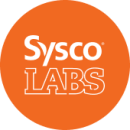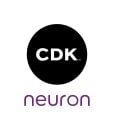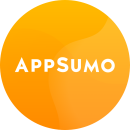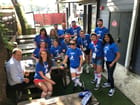What do Superman and product and design teams have in common? To answer that question, think about super hearing.
On the one hand, it’s the easiest way for Superman to hear shouts for help. He can hear the fearful cries of mugging victims, the scheming of supervillains and the yowling of cats stuck in trees all over the world. On the other hand, the sensory overload has to be impossibly strong — some of us regular humans can’t even listen to music and hear someone talking at the same time. So how can Superman hear every sound in the world at once?
It’s simple: He’s become an expert at separating helpful and unhelpful noise. With practice, experience and knowledge he can discern a cry for help from a cheer at a sports game and still converse with the person directly in front of him. In the same way, a company’s product and design teams need to be able to separate helpful and unhelpful customer feedback to determine what needs their product should actually serve.
Like Superman, product managers and designers are inundated with all sorts of feedback — from surveys, reviews, interviews, tests and more — and must be able to sift through it for what they actually need. It’s a skill that takes time to develop, but that also means it’s a skill that can be learned.
Built In Austin spoke to five product designers and managers that are experts at sorting that feedback and combining it with their own expertise to create successful products for their clients. Employees from Iodine Software, Zello, AppSumo, Sysco LABS and CDK are here to pass on their advice and expertise.

Sysco LABS
What tools do you use to get customer feedback?
There are hundreds of helpful software tools to capture customer feedback — don’t start there. Instead, start with your strategy for understanding the problem, then apply it to your tools.
Don’t fool yourself with data. You may think an abundance of it will help you find the perfect solution; however, it is only helpful if you take the time to make sense of it. Allocate as much or more time to analyzing the data as you do to collecting it. Customer feedback is the surface-level manifestation of forces that underlie a problem. So dive below, asking questions about patterns, systematic structures and mental models that allow the situation to persist — policy, cultural or environmental forces and user beliefs, for example.
Widen your focus by getting multiple perspectives. Solving the problem of one customer usually leads to niche problem solving. Instead, consider the relevance of your problem in the context and goals of a wider audience.
Finally, exclude anything not directly related to the problem so that you are focused on the cause, its drivers and their effect. Use these defined boundaries to create a crisp description of the problem you are solving to avoid a loss of focus.
How do you put yourself in the mindset of a user, given all the extra knowledge you have about your product?
I design tools for healthcare professionals. Healthcare is a complex, messy problem space — and while I’ve been designing in this space for 17 years, the ever-evolving landscape of regulatory policies, clinical concepts and practices continues to surprise me. It’s counterintuitive, but this dynamic complexity has a helpful side effect: It forces you to regularly reexamine your understanding of the user’s mindset. If you’re framing the user’s perspective through a narrow product lens, it’s easy to confuse the question, “what is the user trying to do?” with “what am I designing?” Instead, ignore the product design implications and focus on understanding the user’s thinking through empathic listening.
As Stephen Covey said, “to truly listen means to transcend your autobiography, to get out of your own frame of reference, out of your own value system, out of your own history and judging tendencies, and to get deeply into the frame of reference or viewpoint of another person.” This means understanding how your users think and feel about their goals and any barriers to those goals — whether they’re right or wrong. It empowers you to think holistically and empathetically about why the problem exists.
Allocate as much or more time to analyzing the data as you do to collecting it. Customer feedback is the surface-level manifestation of forces that underlie a problem.”
How do you distinguish between what users want and need when there’s a conflict between the product output and the overall goals of your company?
Iodine’s goals are not driven by wants — ours or the customers. Rather, they are driven by what is needed to ensure our customers are successful. Any conflict between goal and product is resolved using data, best practices and change management. First, we use data from multiple sources — utilization, interviews, testing, surveys and so on — to define and validate the need. Coupled with that data, we next make evidence-based product decisions by evaluating how to support that need within the modern best practices of our client’s industry and our own. This could mean modeling our solution within the constraints of current best practices or developing and testing an entirely new best practice.
Ultimately, we use change management processes to prepare, support and measure our client’s success as they make organizational changes to address the need in practice. I must emphasize that change management is critical for the last mile of implementation; many product developers fail to take that into account. Without it, you’re effectively adopting a risky “build it and they will come” strategy.
What tools do you use to get customer feedback?
For a particularly difficult design or product issue, there are a few things we do to understand and create the best solution for our users. First, we look at our existing data as well as any previous interviews that may give us more information about the issue. We can dig down with other teams like our customer support and sales teams, who may hear first hand from our customers how they are experiencing the issue. After that, we can try to gather even more data via surveys and additional customer interviews.
Usually at this point we gain a pretty good understanding of the issue and we can start creating design prototypes. The prototypes can be used to test our hypotheses with real users through either A/B testing or some rounds of usability testing.
How do you put yourself in the mindset of a user, given all the extra knowledge you have about your product?
The best way to learn about our users is to try to speak with them regularly. It is important not only to know how they are using Zello but also the bigger picture around their jobs. “Jobs to be done” is a methodology we like to use to understand our users better — it creates a more complete picture of what they’re doing to achieve their daily work.
With particularly complicated features, we do companywide alpha testings — usually motivating our people with some pizza or other incentive. The alpha tests are normally set up in a way that is somewhat realistic to what the customer would experience, which is why it’s important that we understand the operational picture. For example, if we’re building something for dispatchers, we create alpha tests around dispatching people to complete certain tasks. This is how we uncover UX issues we hadn’t thought about, as well as just regular bugs we didn’t catch before. It also puts us into the mindset of a user when we experience some real stress around completing our tasks.
How do you distinguish between what users want and need when there's a conflict between the product output and the overall goals of your company?
Our job as product managers is to provide value to users; that’s our output. Usually company goals are associated with growth in either revenue or usage. This is great, because if we’re creating features and products that create value for the end users it’s likely these become aligned with our company goals and in turn help us achieve those goals.
What’s the “Jobs to be Done” model?
- Rather than focus on the product or the customer, focus on what process, or “job,” needs to be accomplished.
- Customers buy a product to do a job — to accomplish something specific — so that’s their priority above all else when choosing what to purchase, and what developers should prioritize.
- Popularized by Harvard Business School professor Clayton Christensen in the early 2000s.
What tools do you use to get customer feedback?
At Sysco LABS, we’re fortunate enough to have a team of dedicated UX Researchers who we partner with to understand our customers. We’re constantly talking to our customers to understand how our platform fits into their day-to-day activities of running their business and ultimately make sure we’re working on the right things to solve their biggest pain points. Recently, a feature we rolled out on our platform was not getting the traffic and engagement we had predicted. After some additional research, we updated the location of the feature and we saw a 35 percent increase in traffic and a 68 percent increase in customer engagement. Without talking to customers, getting these types of quick insights are nearly impossible.
How do you put yourself in the mindset of a user, given all the extra knowledge you have about your product?
The Product team at Sysco LABS is always practicing empathy. We listen to our customers, and we are constantly trying to put ourselves in their shoes to understand their perspectives. It can get complicated because there are thousands of Sysco customers across the United States, ranging from mom-and-pop shops to national chains with hundreds of locations to schools and hospitals with very specific standards and policies. We are vigilant at mapping the customer experience for all customer types to make sure we’re building the best experience for everyone, including the little guy.
Sysco is a complex corporation with many stakeholders. As a product manager, I bring our customers’ voices to the table to engage all stakeholders to be advocates for our vision to improve the customer experience at every step.
We are vigilant at mapping the customer experience for all customer types to make sure we’re building the best experience for everyone.”
How do you distinguish between what users want and need when there’s a conflict between the product output and the overall goals of your company?
Sysco’s mission, across the board, is delivering success for our customers through industry-leading people, products and solutions. While our yearly company goals may change, our overall mission stays the same. We deliver on our company goals by looking at customer research results, data and analytics, and constantly testing different solutions to see what is going to give us the highest impact. Based on all that input, we have the autonomy to decide what levers to pull to meet our customers’ needs while still achieving our company goals.
What tools do you use to get customer feedback?
Some tools I use to gather intelligence on how users and customers feel when they interact with our products and services are surveys, polls, data analytics tools, usability testing, interviews, focus groups, user forums and customer advisory portals. I choose the appropriate tools based on the type of feedback that I’m looking to gather.
One example of how I use a tool is when I use data analytics tools to gather quantitative data by tracking customer usage patterns, user behaviors and workflows, which can help me gather metrics on adoption, engagement and retention of my customers. Another tool I use often is 1-on-1 interviews — this helps me gather qualitative data, and open-ended questions help me understand how my product is functioning and help me validate my assumptions about user experience and users’ behaviors when using our products.
I research what my users are looking for by combining tools that gather feedback. As I gather this data, I review the feedback to build patterns. These patterns help me figure out areas of focus and information gaps that can help me determine pain points so I can simplify the complexity of the product issue to meet their needs.
How do you put yourself in the mindset of a user, given all the extra knowledge you have about your product?
It is very important for me to be empathetic towards my customers and users of my products. I do my best to listen attentively to my customers without any biases because it doesn’t matter what my opinions are if my products are not meeting the needs of my users. I spend a lot of time listening to various stakeholders and documenting their opinions about the products because I want to make sure that I’m making evidence-based decisions in relation to how the customers feel.
I do my best to listen attentively to my customers without any biases.”
How do you distinguish between what users want and need when there’s a conflict between the product output and the overall goals of your company?
My goal as a product manager is to ensure that I build products that are feasible, valuable and usable for my customers while remaining in alignment with the overall business goals. In my experience, understanding what the users’ must-haves are from the initial stages of discussion helps me distinguish between what users want and need. When I focus on understanding how a new product, product feature or improvement to an existing product solves for specific customer pain points, I can easily differentiate between a must-have solution and a nice-to-have solution within the realm of the overall goals of the company. One of the strategies I use to distinguish between what users want and need is asking clarifying or focusing questions to help manage scope and define what needs to be built.
What tools do you use to get customer feedback?
At AppSumo, we use Paperform for sending out traditional surveys, Dovetail to aggregate data from our partner and customer interviews and UserZoom for unmoderated user testing. In Paperform, you can view submissions by survey and export that data as a CSV. We also have a Slack plugin that relays new submissions to our team so the appropriate team member can respond directly. In Dovetail, you can drill down by using tags or highlighting sections in the video transcript that you want to note for the rest of the team; you can also summarize your research findings in a high-level description. It’s a really great tool that can be used as a library for all future interviews. UserZoom is extremely helpful for testing prototypes early and often. Our team practices rapid, iterative testing with any new feature we’re looking to implement, and UserZoom allows us to reach a wide audience of consumers.
How do you put yourself in the mindset of a user, given all the extra knowledge you have about your product?
I think it’s a combination of knowing who you’re designing for, being empathic towards any outliers and drawing upon our own mental models to build the best product that solves the user’s needs. It’s easy to get bogged down with all of the data that you gather through different research methods. As designers, being able to filter down information and identify areas where we might need to spend additional time or adjust our long-term product vision is a skill that we build over time. At the end of the day, it’s really about connecting with our users and always maintaining an open line of communication because they are who we do this for.
It’s all about understanding the root of the problem. Typically, there’s some unmet need that the users are trying to convey.”
How do you distinguish between what users want and need when there’s a conflict between the product output and the overall goals of your company?
It’s all about understanding the root of the problem. Typically, there’s some unmet need that the users are trying to convey. As product designers, it’s our job to listen to what they want and ultimately what they’re trying to achieve. From that information, we interpret what the real need is through both qualitative and quantitative research. We then hypothesize through prototyping to test whether we have a viable solution to our user’s needs. Through testing, we can estimate the impact this change would have on our business goals both in the long term and short term. To their credit, I’ve found our leadership has been very responsive to this kind of data-driven approach. If ultimately it’s decided that it may not be in the best interest of the company to move forward with that solution, we as agile innovators need to be willing to adapt and move on.


















